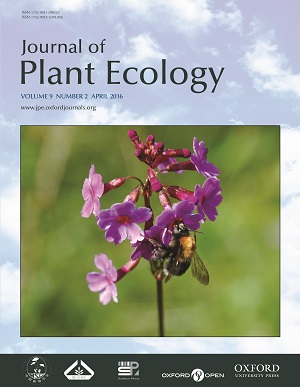Current Issue
-
 Volume 9 Issue 2
Volume 9 Issue 2
A bumblebee (Bombus festivus) is sucking nectar from distylous Primula poissonii which tongue may carry pollen grains from the short- and long- styled morph. Alteration of the relative position of anthers and stigmas within flowers suggested that reciprocal herkogamy promoted compatible pollination, pictured by Shuang-Quan Huang at Shangri-La, southwest China. See Shu-Juan Liu et al. in this issue.
IF: 3.9
CiteScore: 5.7
CiteScore: 5.7
Editors-in-Chief
Yuanhe Yang
Bernhard Schmid
Yuanhe Yang
Bernhard Schmid
CN 10-1172/Q
ISSN 1752-9921(print)
ISSN 1752-993X(online)
ISSN 1752-9921(print)
ISSN 1752-993X(online)







